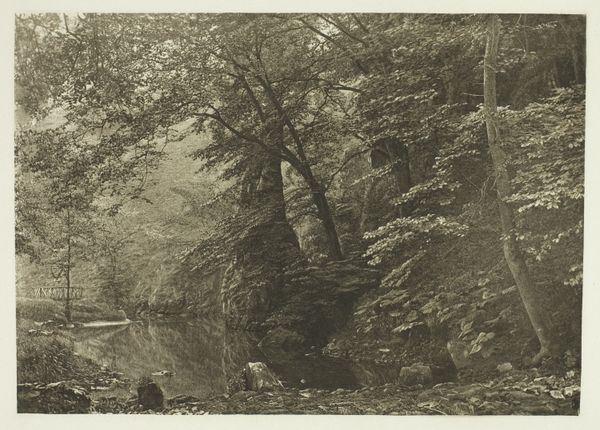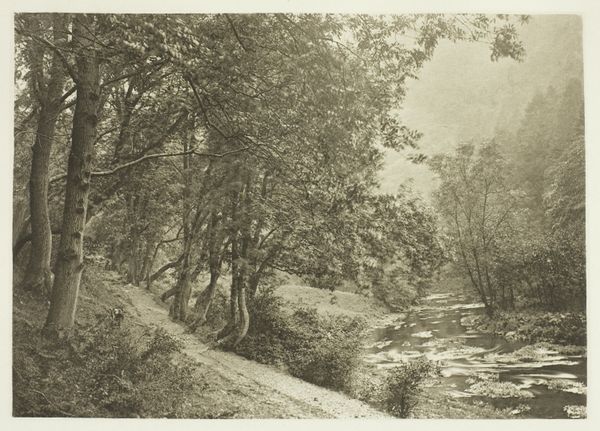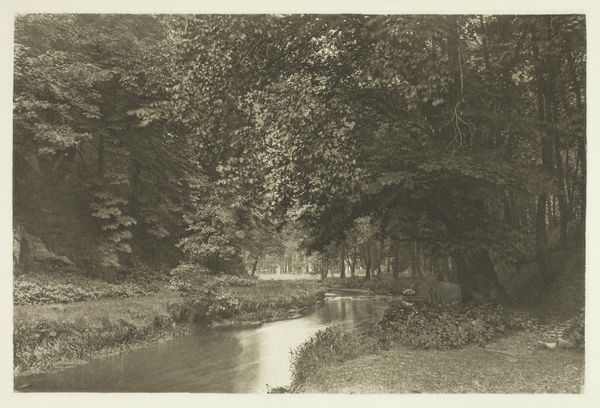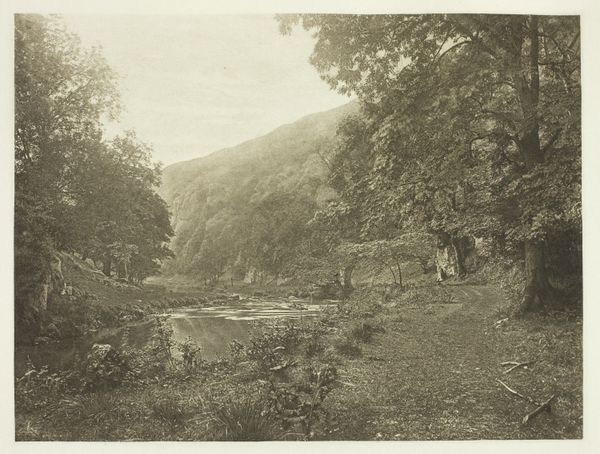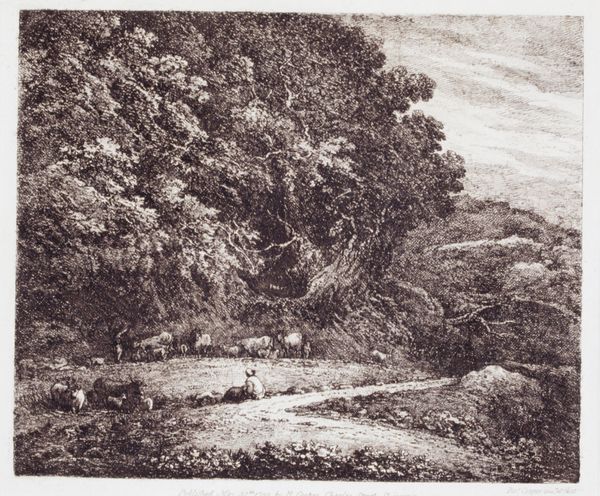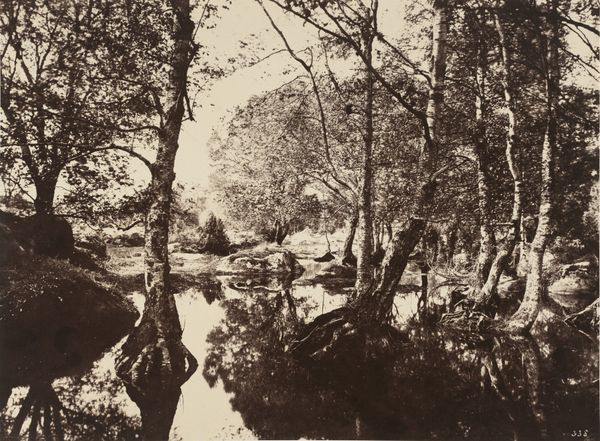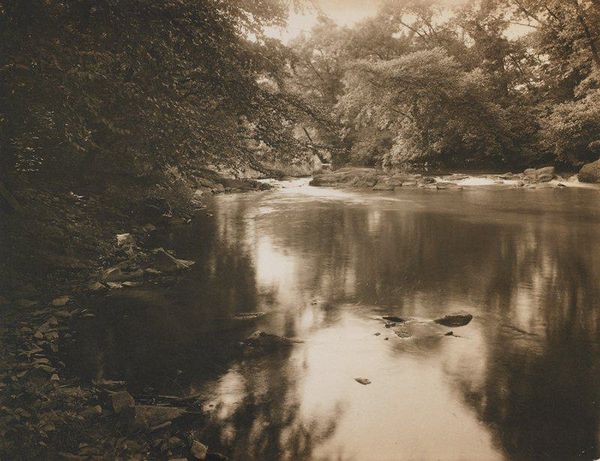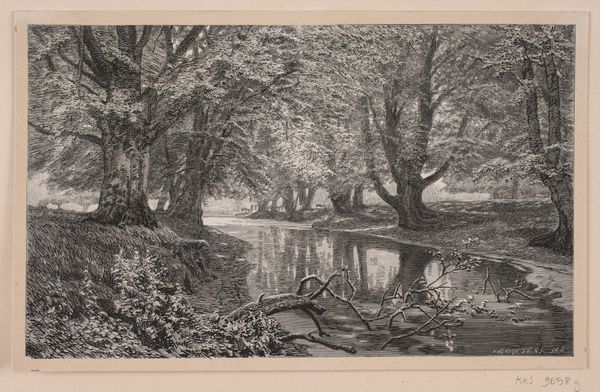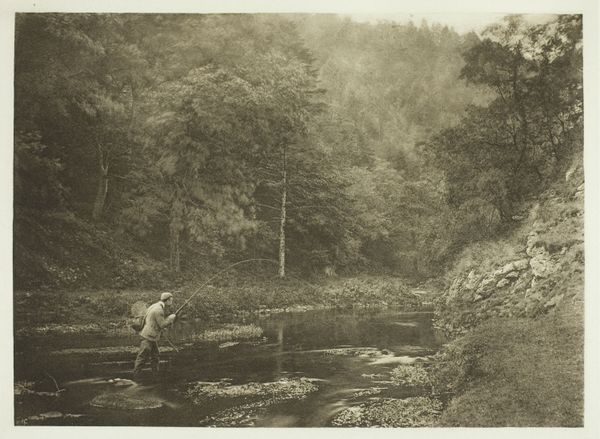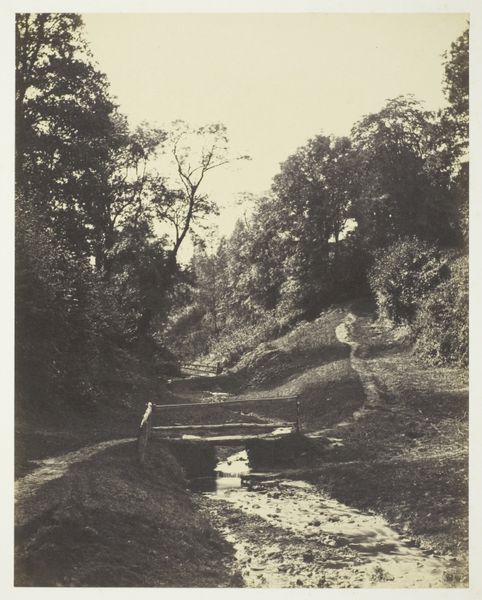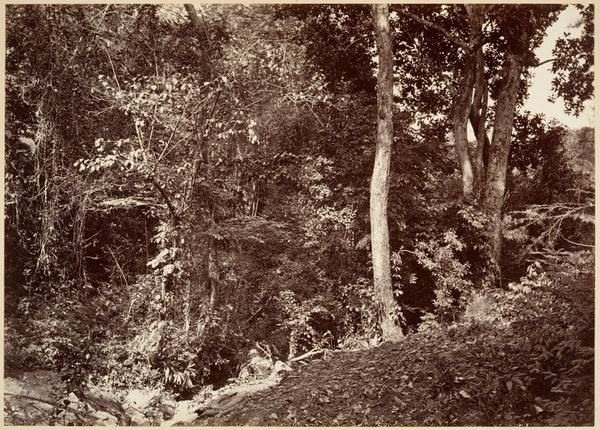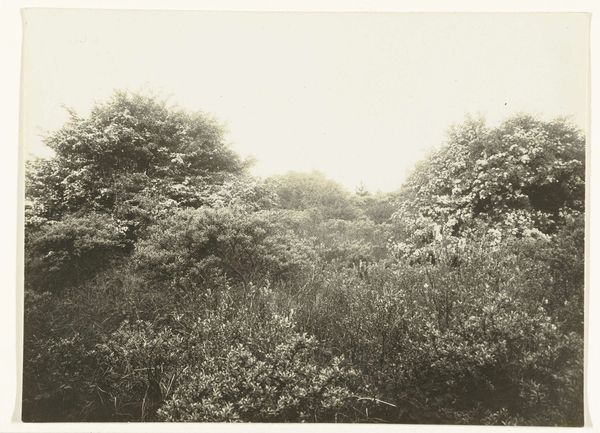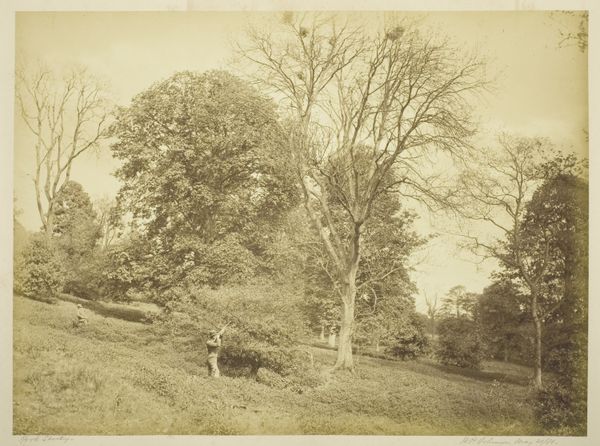
plein-air, photography
#
pictorialism
#
impressionism
#
plein-air
#
landscape
#
nature
#
photography
#
england
#
naturalism
Dimensions: 14.3 × 20.1 cm (image); 16.4 × 22.1 cm (paper); 24.6 × 32.4 cm (album page)
Copyright: Public Domain
Curator: This image by Peter Henry Emerson, probably taken in the 1880s, captures a “Quiet Nook in Beresford Dale." What do you make of its atmosphere? Editor: It feels… pastoral, but also faintly unsettling. There’s an almost oppressive quality to the density of the trees, and that figure prone in the grass seems so isolated. Curator: Emerson's work aligns strongly with Pictorialism, a late 19th-century movement where photographers sought to have their images recognized as art. Look at how this composition evokes painted landscapes from the period. Editor: Absolutely. The soft focus lends it that dreamlike quality reminiscent of Impressionism. And the way Emerson crops the scene, almost pushing the viewer right into the thick of nature...that speaks to Naturalism's influence too. But who is this boy at the foreground, and why is he there? Curator: The child, or person, in the foreground invites a wealth of projection. For a Victorian audience steeped in Romantic ideals of nature, this image could easily spark associations with solitude and nature as sanctuary from an increasingly industrialized world. Perhaps an emblem of youthful curiosity lost in reverie. Editor: Interesting. But considering the burgeoning urban centers of the late 1800s and social anxieties of the time, I read this as having something to do with urbanization: perhaps nature and childhood "dying". This piece definitely reflects the tension of a changing society. Curator: It's precisely this sort of interpretive richness that made Emerson's photography so compelling then, and keeps it interesting today. It embodies a very specific moment when photography was still negotiating its place amidst traditional fine arts. Editor: And it holds its own, wouldn't you say? Its historical value gives this particular piece immense meaning, and raises questions on the human connection to nature. I find it profound that photographs such as this can stir up our views on urban societies. Curator: Indeed. The power of images to preserve memory and provoke contemplation across eras should never be underestimated. Editor: Agreed. It also reminds us how photographs themselves, seemingly objective, always participate in larger dialogues about culture, identity, and belonging.
Comments
No comments
Be the first to comment and join the conversation on the ultimate creative platform.

